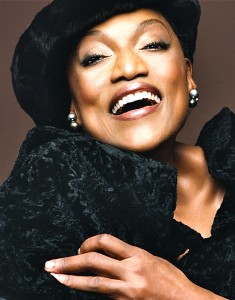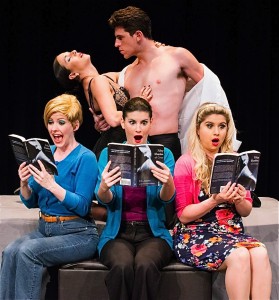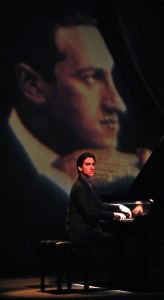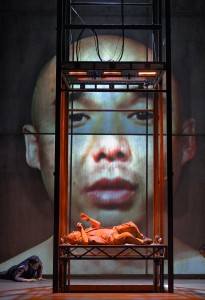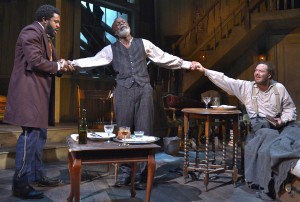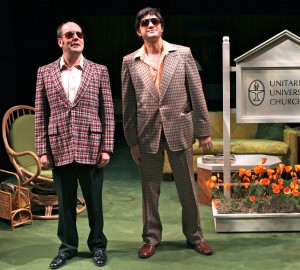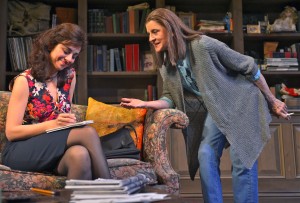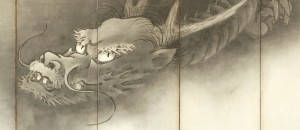
Detail from “Dragon and Tiger,” part of “In the
Moment” exhibit at the Asian Art Museum.
Photo: Courtesy, Larry Ellison Collection.
Peanut butter and jelly. Ginger Rogers and Fred Astaire. Beauty and the beast.
Famous couplings that trickle off my tongue.
I’m sure you can conjure up dozens more. But you’d probably never list Larry Ellison and Emily Sano.
You should.
Few would dispute that Sano, who was its executive director, was the driving force in moving the Asian Museum to the old San Francisco Library building opposite City Hall and growing its collection to a world-class status.
That was 10 years ago.
Then, in 2008, the billionaire founder of Oracle surprised virtually everyone — including, perhaps, Sano, who’d announced her retirement the year before — by offering her almost a blank check to become his personal consultant and build his collection.
The two obviously have shared a lot more than “J,” their middle initial.
Like philosophy and taste in art.
Now, coinciding with the running of the America’s Cup, which Ellison also has a little something to do with, 60 pieces of his collection that span more than 1,100 years are on display at the museum through Sept. 22 (though a few components are slated to be rotated out this week).
Folding screens, hanging scrolls, lacquer-, metal- and woodworks prove the Ellison-Sano collaboration has worked well.
Consider, for instance, the amazing introductory display that showcases folding screens and fluctuating lights that, in a three-minute span, simulate the passage of a single Japanese day. It’s a visual echo of the way artworks were seen in pre-electric times, by natural sunlight or flickering candlelight.
“In the Moment: Japanese Art from the Larry Ellison Collection” ranges from “Waves and Rocks,” a pair of screens with ink, light colors and gold on paper from the early 1600s, to exquisite sculpture from the 4th century.One of the most striking items is a scroll from the 1300s that depicts the death of Buddha (which traditionally had been removed from its box and unrolled for display only one day a year).
Another favorite of mine is the 20 painted fans that are part of “24 Paragons of Filial Piety,” a pair of folding screens addressing “the self-sacrificing behavior of Chinese children [and their] strong respect, obedience, and care for parents, elderly, family members and ancestors.”A superb cultural synopsis, if you ask me — like the exhibit itself.
Other not-to-be-missed items include screens titled “Dragon and Tiger,” a 1780s work (purportedly Ellison’s favorite object) in which the former symbolizes yang and the latter yang, and “White Elephant,” a hanging scroll from 1768 that shows the Japanese can superimpose a sense of humor onto their sense of seriousness.
Jim Brown, a friend who’s just begun his last leg of a three-year intensive course at the museum so he can be certified as a docent, guided my wife and me through the show (which was curated by Laura Allen).
His torrent of words — a distinct contrast with the spare, spartan exhibit — mesmerized me.
He later showed us more of the building (a mere hint of the 2,200 objects on display
, out of a more than 15,000-piece permanent collection that covers 6,000 years) — focusing his “practice tour” on one of his leanings, art that depicts mythical and real animals.I enjoyed experiencing “Buffalo,” a rock crystal sculpture in the jade room; a bronze ritual wine vessel in the shape of a rhinoceros (whose inscription I could see in the reflection of the glass case if I tilted my head and twisted my body pretzel-like); and a Taoist ceremonial robe with countless critters (including dragons and phoenixes) that emphasized longevity plus balance and order in the cosmos.
But a “Money Tree” sculpture that incorporated scores of animals that represent
ed Confucian, Taoist and Buddhist beliefs of “creation, birth and rebirth” in one piece utterly captivated me.And since we only scratched the proverbial surface of both the Ellison exhibit and the rest of the museum, I definitely plan to return.
Soon.
The Asian Art Museum, 200 Larkin St., San Francisco, is open from 10 a.m. to 5 p.m. Tuesdays to Wednesdays and Fridays to Sundays; 10 a.m. to 9 p.m. Thursdays. Tickets: $8 to $12. Information: (415) 581-3500 or www.asianart.org.




